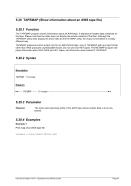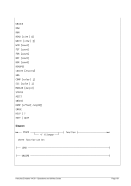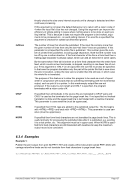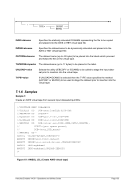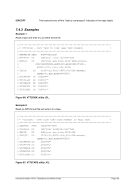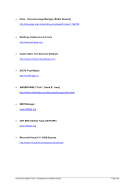Symbol
Description
¬¬¬¬ PARM= ¬¬§¬¬¬¬ option_1 ¬¬¬¬§¬¬¬¬¬¬
ª¬¬¬¬ option_2 ¬¬¬¬«
option
A keyword with options. Only one of the
available options may be specified. The
underscored option is the default if the
whole keyword statement is not coded.
¬¬¬¬¬¦¬¬¬¬¬¬¬¬¬¬¬¬¬¬¬¬¬¬¬¬¬¬¬¬¬¬¬¦¬¬¬¬¬
ª¬¬¬¬ optional_choice_1 ¬¬¬¬«
An optional choice (keyword or variable)
with default appears vertically stacked
with the default value above the main
path of the horizontal line and the remai-
ning optional elements below the main
path of the horizontal line. Only one of
the available options may be specified. If
none of these elements is explicitly
specified, the default above the main line
is taken.
¬¬¬§¬¬¬¬¬¬¬¬¬¬¬¬¬¬¬¬¬¬¬¬¬¬¬¬¬¬¬¬¬¬¬§¬¬¬
optional choice ¬¬¬¨¬¬¬¯
¬¬¬§¬¬¬¬¬¬¬¬¬¬¬¬¬¬¬¬¬¬¬¬¬¬¬¬¬¬¬¬¬¬¬§¬¬¬
,
optional choice ¬¬¬¨¬¬¬¯
An arrow returning to the left of an ele-
ment below the main path of the hor-
izontal line indicates an optional repeat-
able item. A character within the arrow
path means that repeated items have to
be separated by that character. If there is
no character within the arrow path then
the items are separated by a blank.
element ¬¬¬¬¨¬¬¬¬¬
¬¬¬¬ required element ¬¬¬¬¨¬¬¬¬¬
An arrow returning to the left of an ele-
ment on the main path of the horizontal
line indicates an required repeatable
item. A character within the arrow path
means that repeated items have to be
separated by that character. If there is no
character within the arrow path then the
items are separated by a blank.
¬¬¬¬¬¬¬¬¬¬¬¬¬« SEGMENT ª¬¬¬¬¬¬¬¬¬¬¬¬¬¬
This symbol is a reference to a syntax
segment, which is described separately
below the main syntax diagram. Complex
syntax diagrams are occasionally broken
into separated simpler segments.




























































































